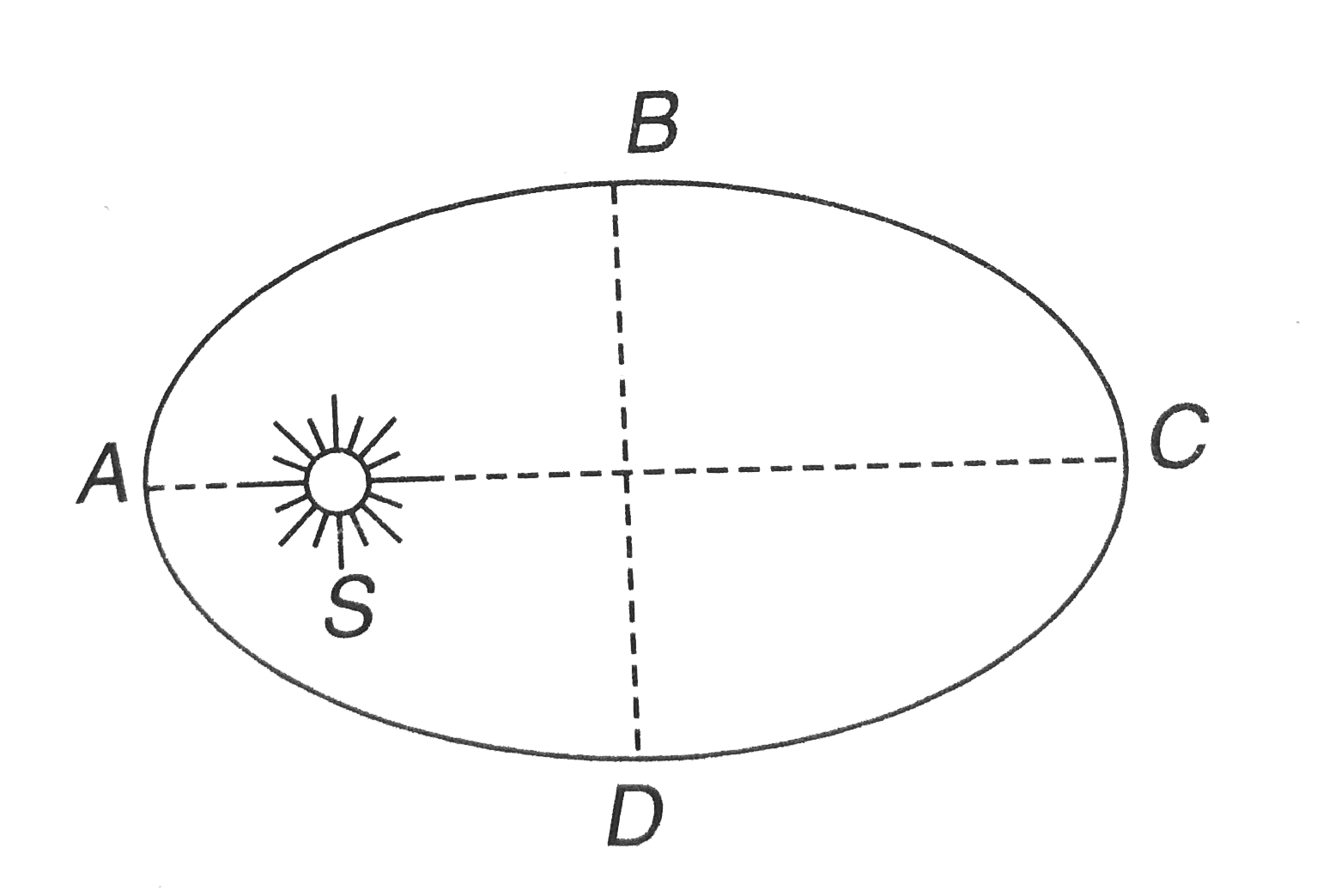Length of a year on a planet is the duration in which it completes one revolution around the sun. Assume path of the planet known as orbit to be circular with sun at the centre. The length T of a year of a planet orbiting around the sun in circular orbit depends on universal gravitational constant G, mass ms of the sun and radius r of the orbit. if T∝Gambsrc find value of a+b+2c.
1
2
3
4
The correct Answer is:B
To solve the problem, we need to establish the relationship between the period T of a planet's orbit, the universal gravitational constant G, the mass of the sun ms, and the radius of the orbit r. We can express this relationship in terms of dimensional analysis.
1. Establish the relationship:
We know that the period T is proportional to Ga⋅mbs⋅rc. Thus, we can write:
T∝Ga⋅mbs⋅rc
2. Write down the dimensions:
- The dimension of G (gravitational constant) is:
(G)=(M)−1⋅(L)3(T)2=M−1L3T−2
- The dimension of ms (mass of the sun) is:
(ms)=M
- The dimension of r (radius) is:
(r)=L
- The dimension of T (time period) is:
(T)=T
3. Substituting dimensions into the equation:
Substituting the dimensions into the equation gives:
(T)=(G)a⋅(ms)b⋅(r)c
This translates to:
T=(M−1L3T−2)a⋅(Mb)⋅(Lc)
Simplifying this, we get:
T=M−a+b⋅L3a+c⋅T−2a
4. Equating dimensions:
For the dimensions to be consistent, we equate the powers of M, L, and T to those of T:
- For mass M:
−a+b=0(1)
- For length L:
3a+c=0(2)
- For time T:
−2a=1(3)
5. Solving the equations:
From equation (3):
−2a=1⟹a=−12
Substituting a into equation (1):
−(−12)+b=0⟹12+b=0⟹b=−12
Substituting a into equation (2):
3(−12)+c=0⟹−32+c=0⟹c=32
6. Calculating a+b+2c:
Now we can find a+b+2c:
a+b+2c=−12−12+2⋅32
Simplifying this:
=−1+3=2
Final Answer:
The value of a+b+2c is 2.
We know that the period T is proportional to Ga⋅mbs⋅rc. Thus, we can write:
T∝Ga⋅mbs⋅rc
- The dimension of G (gravitational constant) is:
(G)=(M)−1⋅(L)3(T)2=M−1L3T−2
- The dimension of ms (mass of the sun) is:
(ms)=M
- The dimension of r (radius) is:
(r)=L
- The dimension of T (time period) is:
(T)=T
Substituting the dimensions into the equation gives:
(T)=(G)a⋅(ms)b⋅(r)c
This translates to:
T=(M−1L3T−2)a⋅(Mb)⋅(Lc)
Simplifying this, we get:
T=M−a+b⋅L3a+c⋅T−2a
For the dimensions to be consistent, we equate the powers of M, L, and T to those of T:
- For mass M:
−a+b=0(1)
- For length L:
3a+c=0(2)
- For time T:
−2a=1(3)
From equation (3):
−2a=1⟹a=−12
Substituting a into equation (1):
−(−12)+b=0⟹12+b=0⟹b=−12
Substituting a into equation (2):
3(−12)+c=0⟹−32+c=0⟹c=32
Now we can find a+b+2c:
a+b+2c=−12−12+2⋅32
Simplifying this:
=−1+3=2
The value of a+b+2c is 2.
Topper's Solved these Questions
- TEST PAPERSBOOK - ALLENCHAPTER - TEST PAPERSEXERCISE - Part-1 Physics
15 Videos
- TEST PAPERSBOOK - ALLENCHAPTER - TEST PAPERSEXERCISE - part-2 physics
71 Videos
- TEST PAPERSBOOK - ALLENCHAPTER - TEST PAPERSEXERCISE - PAPER 2
60 Videos
- TEST PAPER 4BOOK - ALLENCHAPTER - TEST PAPER 4EXERCISE - PHYSICS
44 Videos
- UNIT & DIMENSIONS, BASIC MATHS AND VECTOR BOOK - ALLENCHAPTER - UNIT & DIMENSIONS, BASIC MATHS AND VECTOR EXERCISE - Exercise (J-A)
7 Videos
Similar Questions
When a planet moves around the sun
View SolutionEarth completes one orbit around the sun is
View SolutionExplain the motion of a planet around the sun in a circular path?
View SolutionIt is known that the time of revolution T of a satellite around the earth depends on the universal gravitational constant G, the mass of the earth M, and the radius of the circular orbit R. Obtain an expression for T using dimensional analysis.
View SolutionWhich of the following statements are correct about a planet rotating around the sun in an elleptical orbit
View SolutionIf the mass of a revolving around the sun is doubled and its frequency of revolution remains constant then the radius of its orbit will be
View SolutionA planet is moving round the sun in an elliptical orbit as shows. As the planet moves from A to B

View SolutionA planet is revolving round the sun in an elliptical orbit as shown in figure. Select correct alternative(s)
View SolutionA planet is revolving around the sun as shown in elliptical path. The correct option is

View SolutionIf the angular momentum of a planet of mass m, moving around the Sun in a circular orbit is L, about the center of the Sun, its areal velocity is :
View Solution
